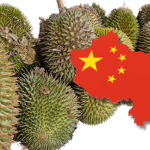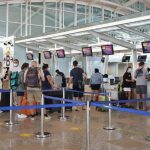PHOTO: Bernama
IN THE heart of Kuala Lumpur, amidst the clatter of a bustling mamak restaurant, Lauren Dai, a Shanghai native, guides her online followers through the intricacies of ordering local delicacies. On Xiaohongshu, she patiently explains the nuances of “teh tarik,” “roti tisu,” and “mee goreng,” acting as a cultural bridge for her fellow countrymen.
Dai, who relocated to the expatriate enclave of Mont Kiara in 2019 under the Malaysia My Second Home (MM2H) visa, is part of a growing wave of mainland Chinese seeking respite from the intense competition of “neijuan” – the relentless “rat” race”—back home.
“My last 20 years in fast-paced Shanghai and Hong Kong have been exhausting,” the 38-year-old online advertising executive told the ST.
“In China, there’s no such thing as the end of the workday. WeChat blurs the lines between private and work life.”
As of December 2024, Dai is one of 26,162 mainland Chinese holding MM2H status, representing 45 percent of the scheme’s 57,686 participants. This makes them the largest demographic, drawn to Malaysia’s affordable living and relaxed lifestyle.
Government data reveals that between September 2024 and January 2025, 53 percent of the 2,195 MM2H applicants were from China, followed by Taiwan (8 percent) and Hong Kong (6 percent). This influx generated US$152.8 million in fixed deposits and RM681 million in property investments.
Introduced in 2002, the MM2H programme, initially aimed at attracting affluent retirees, has seen its criteria adjusted over the years. Currently, applicants must maintain a minimum fixed deposit of US$150,000 and purchase property worth at least RM600,000. Despite these stricter requirements, the trend of mainland Chinese applications continues to rise.
Anthony Liew, president of the MM2H Consultants Association, attributes this to the pressures of “neijuan.” “If students are unable to enter elite high schools in China, they are forced to attend vocational schools,” he told ST.
“Those who can afford it are concerned that their children will end up in blue-collar jobs and face discrimination.
They prefer to send their children to Malaysia, especially Kuala Lumpur, to attend international schools.”
Indeed, Kuala Lumpur boasts 141 international schools, attracting families seeking an alternative education. In Penang, property agent Lisa Chan notes that “some 80 percent of my clients in 2025 are from Greater China,” a stark contrast to her early days in 2013.
However, the influx has not been without its challenges. Penang’s international schools have implemented a 20 percent cap on mainland Chinese students per class to maintain diversity.
Ting, a Kuala Lumpur-based interior designer, highlights the pressure from Chinese clients and rival businesses, citing differences in work culture.
In Penang, filmmaker Tang Siang Ching observes the proliferation of mainland Chinese eateries, raising questions about the sustainability of these businesses.
“At first, I enjoyed the variety of food, but I wonder if this trend will last,” she said.
Despite these challenges, many MM2H residents, like Dai, actively integrate into local culture.
“I always hang out with Malaysians because it’s through these local experiences that you truly understand the country,” she says.
Penang also attracts those from Hong Kong, drawn to the island’s geographical similarities and laid-back lifestyle.
Ben Lo, a Penangite who spent years in Hong Kong, recalls a friend’s awe at seeing the clear night sky, a stark contrast to the light-polluted skies of Hong Kong.
For retirees like P and Sun from mainland China, Penang offers a slower pace of life.
“Over-efficiency (and overwork) damaged our relationship in China,” P told ST.
“Penang is better—there’s no neijuan here.”
-BTS Media



